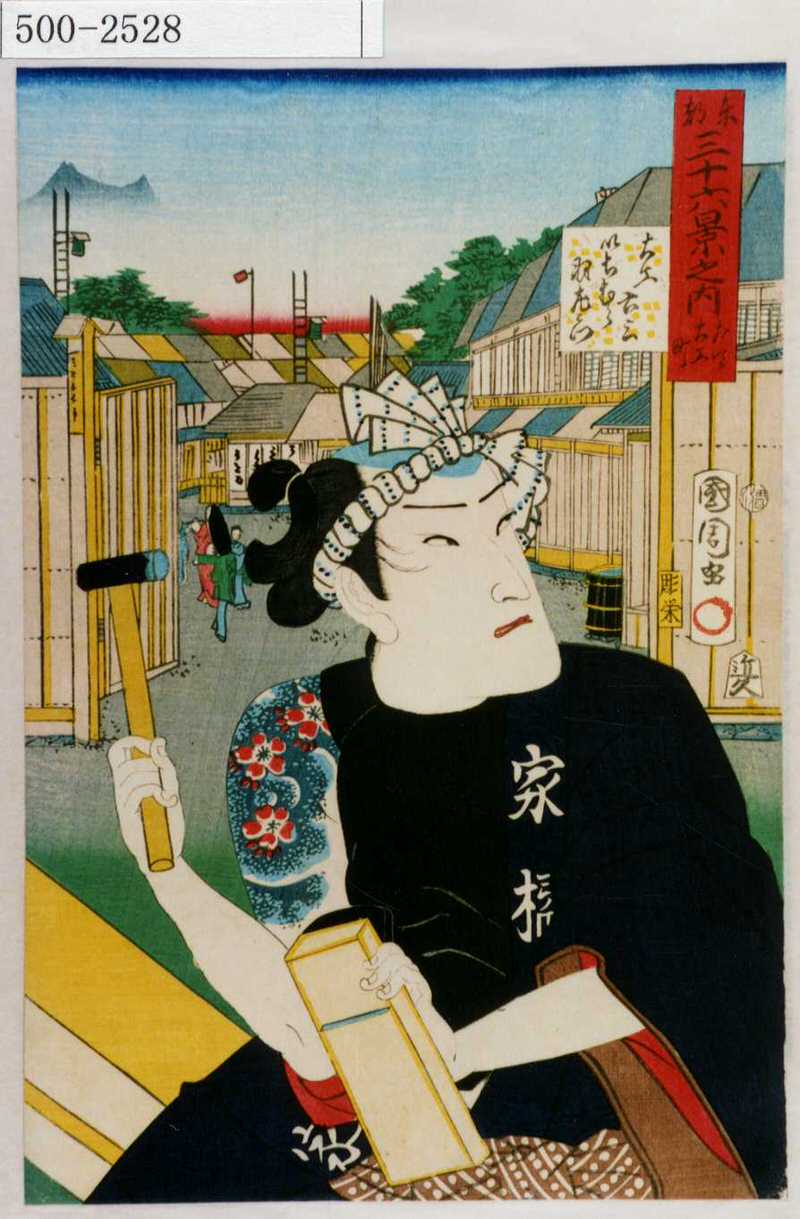Tenugui – Towel
A tenugui is a thin Japanese hand towel made of cotton.
It is typically about 35 by 90 centimeters in size, plain woven and is almost always dyed with some pattern.
It can be used for anything a towel could be used for – as a washcloth, dishcloth, but often as a headband, souvenir, decoration, or for wrapping items.. Towels made from terry cloth have largely replaced it in household use. However tenugui are still popular as souvenirs, decorations, and as a head covering in kendo, where it functions as a sweatband, as extra padding beneath the headgear (men).
Eirakuya
Their main shop in Kyoto is a well-established tenugui store with a history of over 400 years. Their tenugui, with a range of patterns including traditional Japanese textile, auspicious pictures as well as modern designs, are highly recommended as souvenirs. What’s more, they are so light and they do not take up a space in your suitcase.
Website (in Japanese) : http://www.eirakuya.jp
SouSou
Also, check out offerings here. Love this place!
Hachimaki
A hachimaki (鉢巻, “helmet-scarf”) is a stylized headband or bandanna worn in Japan for a variety of reasons, usually made of red or white cloth. They are worn as a symbol of perseverance, effort, and/or courage by the wearer. These are worn on many occasions, for example, by sports spectators, by women giving birth, students or even office workers.
The origin of hachimaki as we know them today is uncertain, but the leading theory is the need for samurai to line their head with cloth before wearing their heavy helmets. The cloth would have protected the wearer from cuts from the helmet moving about and made the fit more comfortable.
In modern Japan people are often seen wearing hachimaki sporting a number of various slogans, usually with a red circle in the center similar to the Japanese flag. They are worn to showcase their cause and/or to soak up sweat while exerting themselves in some sort of physical activity, such as a sport’s day game or carrying mikoshi.
Western pop culture has taken the hachimaki a little bit out of context by always portraying the wearer as some sort of martial artist. One only need think of movies like Karate kid, or Kung Fu Panda for examples of this. While Martial Artists may well wear a hachimaki while training, they are far from the only types of people who may wear one.

Toyohara Kunichika
The carpenters of Japan have worn hachimaki since the early days to prevent sweat from entering their eyes. In the modern era, they still do this, and you can also often see them wrap towels around their heads to the same effect.

